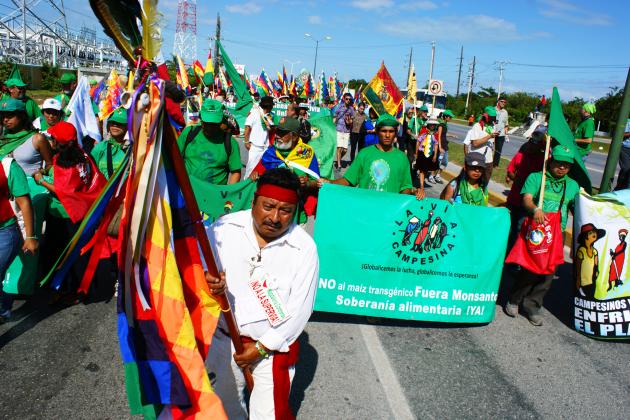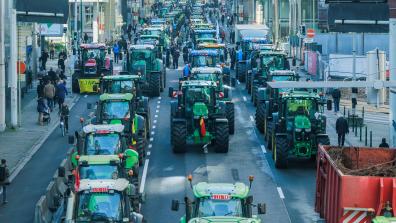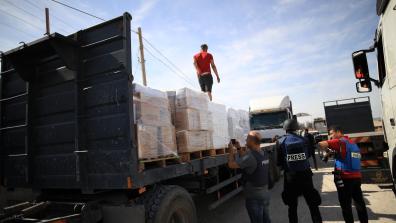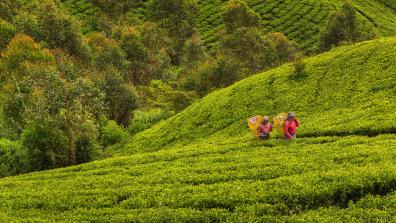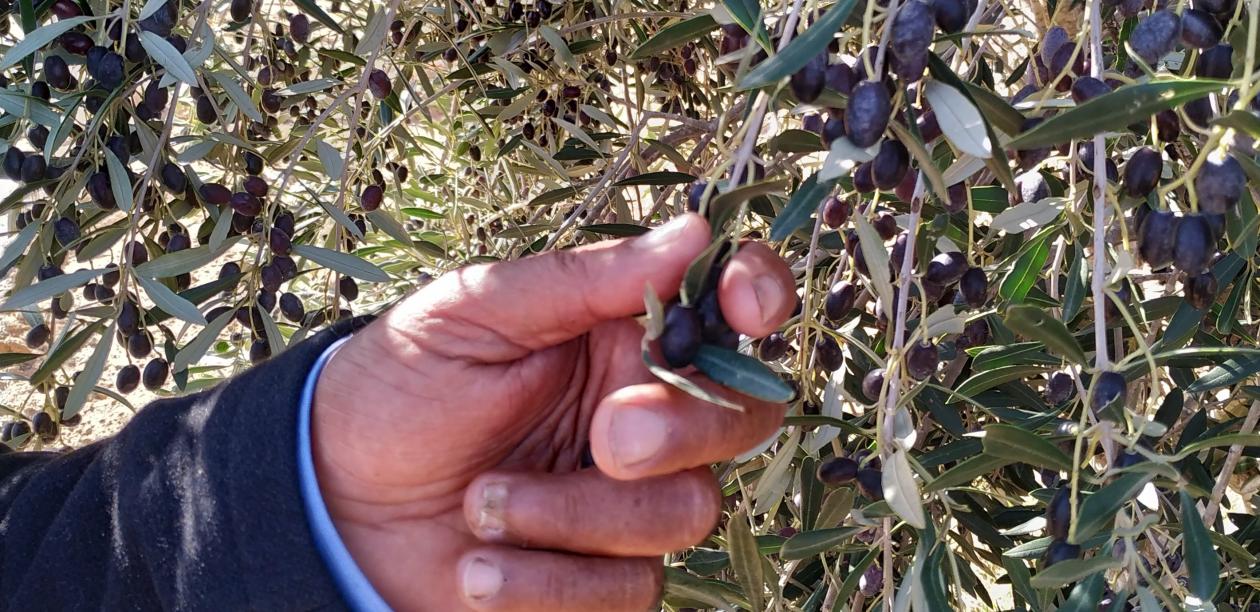The Soulaliyate movement: Moroccan women fighting land dispossession
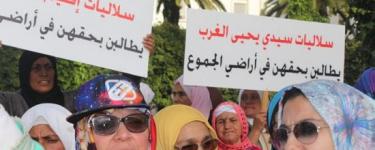
Author: ATTAC Maroc
Editor: Sara Razai
This article is the English version from the Réseau ritimo special dossier on Food Sovereignty in North Africa. You can read the full dossier (in French) here: https://www.ritimo.org/L-universel-au-detriment-du-particulier-la-tension-entre-securite-alimentaire
Although the dispossession of indigenous lands dates back to Morocco’s colonial period, similar forms remain in place post-independence. In the context of global neoliberal policies, the intense commodification and privatisation of land in Morocco is now commonplace. It has had staggering effects on small-scale farmers and agricultural workers, particularly for women who, in addition to being dispossessed of collective lands, have been side-lined. Through grassroots mobilisation that began in the early 2000s, the Soulaliyate women’s struggle has become a nationwide protest movement against land dispossession. Under a unified discourse, they are demanding equal rights and shares when their collective land is privatised or divided.
The Moroccan economy has since the end of the 19th century been heavily dependent on trade agreements and free markets that have made a direct impact on large segments of Morocco’s rural population. The recent study conducted by ATTAC Maroc[1] shows the accelerating speed of impoverishment of small-scale farmers, agricultural workers and their families. Through field work and testimonies on site, the study reveals harrowing accounts of the destruction of people’s livelihoods on the ground.
Modes of dispossession: Collective Lands
One area of concern relates to the large-scale land-acquisition of collective lands for the benefit of private and public companies. Collective land represents the biggest percentage of available land and natural resource reserves in Morocco. Estimated at 15 million ha, 85% of the collective land is pastoral land and the remainder is agricultural land. These lands are usually rich in natural and water resources, and contain stone and sand quarries. The system of collective land sharing is based on long-standing customs and traditions in the greater Maghreb region where the land is used collectively by communities (such as tribes, villages, ethnic groups). The land is collectively owned by the members of the community; there is no distinction between the rights of individuals from the right of the community as a whole.
The acquisition of these lands dates back to the French colonisation and the administration’s efforts at disintegrating traditional social structures and collective land ownership by introducing capitalist modes of production. Equipped by an arsenal of laws, or dahirs, collective lands were reorganised, which allowed the colonial administration to interfere in the management of collective lands and to dismantle traditional systems of collective decision-making among members of the communities. For instance, the law of 12 August 1919 placed collective lands under the tutelage of the state. Under this law, a representative, or Na’ib, was to be the legal representative and interlocutor of the community. Influenced by colonial authorities, the representative’s consent was required for all decisions relating to the land. Although the 1919 law has been amended several times post-independence, it still remains in force.
In parallel, the state itself has actively facilitated the transfer of vast amounts of lands to private and public companies. The ATTAC study reports that at the time of Morocco’s formal independence in 1956, colonial agricultural land was estimated at more than 1 million ha of which more than two-thirds belonged to private colonists. The remaining hectares belonged to the official colonial administration. In 1973, the state recovered 657,188 ha, more than half of which was transferred to private Moroccans. In 1980, areas acquired by private Moroccans rose to 498,872 ha, and the area recovered by the state was 491,927 ha. Following the privatisation of the two public companies that managed the bulk of the recovered lands (The Agricultural Development Company and The Agricultural Land Management Company) in 2003, about 90% of the recovered land was acquired by a small segment of the country’s elite, including state officials in the country’s administrative, military and security sectors.
In line with present global trends of economic liberalisation and privatisation, collective lands in Morocco are being seized, sold and leased to public and private companies. With the approval of community representatives, the Ministry of Interior leases out collective lands to private and public companies to carry out various economic projects such agriculture, tourism quarrying and the extraction of phosphates.
Public and private companies as well as members of the private elite continue to exercise control over collective lands through various official and unofficial means alike. These range from using their influence to make state officials turn a blind eye, circumventing the law and lobbing for the removal of laws that are halting the process of land acquisition. In parallel, the state has doubled its efforts at land acquisition by enacting laws that target large areas. State policy is moving towards further confiscation of collective wealth and it is currently accelerating the pace of land registration of collective land. Backed by laws, the state is currently working to acquire large areas of arable land especially those located in irrigated areas and lands in close proximity to urban areas.
This frenzy of land-acquisition is impoverishing small-scale farmers at an accelerating rate. Unable to invest and compete with large-scale farmers and companies, they are forced to sell or lease their land. Roughly 71% of all farmers in Morocco owned less than 5 ha of land, which in total amounts to about 24% of the total agricultural area in Morocco. In contrast, the number of farmers owning more than 20 hectares amounts to 4% of the total, and they use about 33% of the total agricultural area. The concentration of ownership to a handful of public and private land-owners shows a mass transformation of collective land into individual properties which has severe implications for farmers and agricultural workers.
‘Freedom, social equality and justice’: The Soulaliyate movement
“Soulaliyate women” refers to tribal women in Morocco who live on collective land. The Soulaliyate women’s movement, which began in the early 2000s, arose in the context of intense commodification and privatisation of collective lands. Tribal women began demanding equal rights and shares when their land was to be privatised or divided. Despite intimidation, arrests and sieges by public authorities, the movement has become nationwide and women from different regions have rallied behind the banner of equality and justice.
What follows are some of the struggles of Soulaliyate women across Morocco.
“The land is ours, not yours”
In the early 2000s, Soulaliyate women from the ethnic community of Aoulad Boubker in the province of Beni Mellal organised demonstrations in front of the Beni Mellal prefect. Initially, the demonstrations were thought of as having a positive effect; the Rural Affairs Directorate of the Ministry of Interior dispatched two committees in 2000 and 2001 to investigate the demands of the Soulaliyates. The authorities decided that they did not have the legal justification to the lands. Despite intimidation from private actors, arrests and reports of torture by the Gendarmerie, residents of Aoulad Boubker have not ceased the fight. Since 2010, they have organised more than 20 demonstrations and marchers demanding for their rights to the land.
Struggle against patriarchal values
In some mountainous areas, according to traditions, men inherit a share of their father’s holdings; women are given half of the men’s share for residence while bare land is allotted entirely to men in the family. In the eastern and southern regions, traditions entitle the male to benefit from these lands when he gets married and has a family, but the traditions deprive female providers, except in limited cases when the women are over 48 years of age. In the western areas, collective lands are sold to construction companies, and beneficiaries are limited to males over the age of 16.
The logic behind the tradition of depriving women of their share is the tribe’s aim to preserve the collective ownership within the same tribe, denying women their right to land for fear of them marrying outside the tribe.
Soulaliyate women in Western Morocco have protested through sit-ins and demonstrations in front of their local authorities, demanding equality in compensation during the sale of collective lands. The first protests were carried out in 2007 in the Western region and took the form of rallies and marches where women demanded a fair distribution of mass land.
Restitution
The city of Kenitra has undergone intense urbanisation and land surrounding the city has attracted both public and private investors. In 2007, Soulaliate women from Mehdia, Kenitra Province, organised protests in the city of Kenitra. This was followed by two additional demonstrations in the Moroccan capital of Rabat in 2008 and 2010. In 2013, they received positive news: the Ministry of Interior decided in favour of the Soulaliyate women. This was following an historic ruling by the Administrative Court in Rabat that ruled in favour of the Soulaliyate women and granted them access to collective land, dismissing the arguments of the defence that the decision of the tribal representatives and the traditions of the Soulaliyate community cannot be challenged. For the first time, women from the City of Mehdia became land owners. A total of 128 ha of land entrusted to a real estate company was redistributed to 867 women.
State complicity
Soulaliyate women from Aït Merouel – a tribe that collectively holds around 115,000 ha of land – have been intensively involved in uncovering the truth about the lease of their lands, most of which have been leased without adequate compensation to the rights holders. Many of them live under conditions of extreme poverty. During one of their peaceful marches in the Khénifra province, police forces intervened and wounded several women: one of them was fatally injured – Fadila Akioui, a 38 year old Soulaliyate woman.
Since 2014, Soulaliyate women in the region of Aoulad Sbita, Bouknadel, have fought against the land acquisition of more than 800 ha by Addoha, a real estate company. The land was sold by a handful of agents of the community in 2007 for a pittance (50 dirhams per square meter) and well below the market price. Addoha is now reselling the land at 50 times its original price. The residents have demanded that all rights holders, men and women alike, receive compensation in cash and kind. Although the number of families exceeds 400, the local authorities have counted 226 families. Addoha is issuing 315 plots of land and, according to residents, many of these are being handed over to a small handful of state officials and auxiliaries.
As lands around Soulaliyate women are privatised, threatening their homes and livelihoods, hundreds of thousands of women are left feeling insecure, since compensation (money or plots of land located elsewhere) has traditionally only benefited men. The above experiences illustrate the tenacity and drive of Soulaliyate women to demand their right to land despite the ever-increasing free-market practices in Morocco.
Find out more information on food sovereignty and land rights in North Africa
[1] The French version of the report will soon be available online on the ATTAC-CADTM Maroc website. Read a summary of the report from our Tunisian and Moroccan partners.
